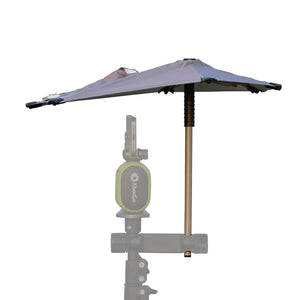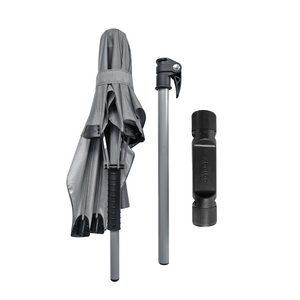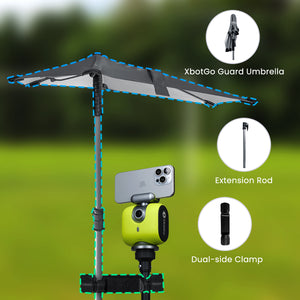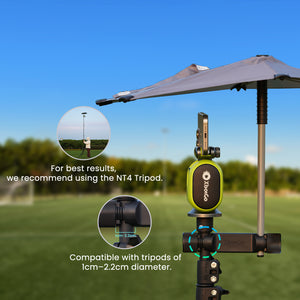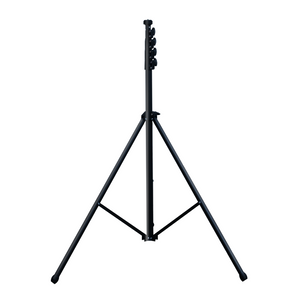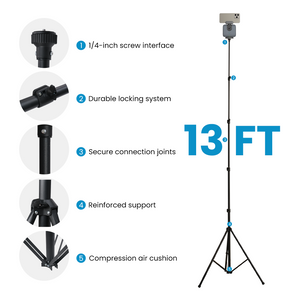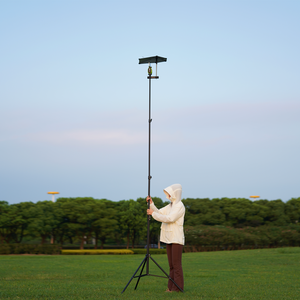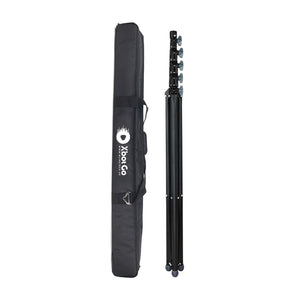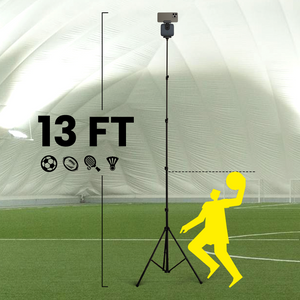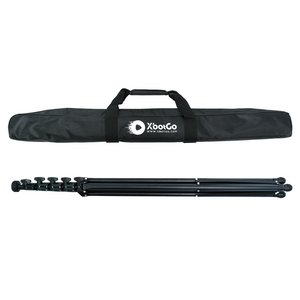XbotGo Chameleon AI Sports Camera
10 Essential Soccer Moves Every Player Should Master
Want to become a more effective player on the pitch? The secret isn't learning dozens of flashy tricks—it's mastering a few essential moves that actually work in real game situations.
While social media is filled with players performing elaborate skill combinations, ask any professional and they'll tell you the same thing: quality beats quantity every time. In fact, even elite players like Lionel Messi and Andrés Iniesta built their careers on just a handful of perfectly executed moves.
This guide breaks down the 10 most important soccer moves you should focus on—each explained in detail and with practical ways to master them.
1. Body Feints
The body feint is arguably the most important move in soccer because it forms the foundation of almost every other skill. By shifting your weight and shoulders in one direction while moving the ball in another, you create that split-second of confusion that opens up space.
How to execute:
- Plant your non-kicking foot beside the ball
- Lean your shoulders and hips decisively in one direction
- As the defender commits, push the ball in the opposite direction with the outside of your foot
- Accelerate into the space you've created
Practice drill: Set up a single cone as your "defender." Approach at moderate speed, perform the feint 2-3 yards before the cone, and accelerate past it. Start slowly, focusing on selling the fake with your entire body, not just your feet.
When to use: Body feints work everywhere on the field but are especially effective when receiving the ball with your back to goal or when approaching defenders head-on in wide areas.
2. Inside/Outside Cuts
Sometimes called "chops," these quick changes of direction are the bread and butter of effective dribbling. They're simple, reliable, and work at any speed.
Inside Cut execution:
- Push the ball diagonally across your body with the inside of your foot
- Plant your outside foot and pivot
- Accelerate in the new direction
Outside Cut execution:
- Use the outside of your foot to push the ball away from your body
- Let your momentum carry you in the new direction
- Keep the ball close for quick follow-up touches
Practice drill: Create a square with four cones, each 5 yards apart. Dribble to each cone and perform alternating inside and outside cuts. Focus on sharp, explosive movements rather than speed.
When to use: Inside cuts are perfect for cutting into central areas from the wing, while outside cuts excel at creating space along the touchline or beating defenders who overcommit.
3. Pull-back
The pull-back might be the most underrated move in soccer. It's simple, effective, and creates instant separation from defenders.
How to execute:
- Plant your standing foot beside or slightly ahead of the ball
- Use the sole of your other foot to drag the ball backward
- Turn your body as you pull, using your standing foot as a pivot
- Push the ball forward with your next touch
Practice drill: Dribble forward at speed, then perform a pull-back every 5-10 yards. Alternate feet and practice turning both directions. The key is maintaining balance throughout the movement.
When to use: Pull-backs are ideal when a defender is closing you down quickly or when you need to reset your attack. They're particularly effective near the corner flag or when receiving long balls with a defender on your back.
4. Cruyff Turn
Named after Dutch legend Johan Cruyff, this move combines deception with a quick change of direction. It looks like you're about to pass or cross, making it incredibly effective.
How to execute:
- Shape up as if you're going to pass or shoot
- Instead of striking the ball, use the inside of your foot to drag it behind your standing leg
- Turn your shoulders and hips as you drag
- Accelerate away in the new direction
Practice drill: Approach a cone as if you're going to pass around it. At the last moment, perform the Cruyff turn and go the opposite way. Practice selling the initial movement—the deception is what makes this move work.
When to use: The Cruyff turn is perfect when defenders expect a cross or shot. Use it on the wing when defenders are blocking crossing angles or in the box when goalkeepers are anticipating a shot.
5. La Croqueta
Popularized by Andrés Iniesta, la croqueta is all about shifting the ball quickly between your feet to glide past defenders.
How to execute:
- Use the inside of one foot to push the ball across your body
- Immediately use the inside of your other foot to push it back
- The key is making this one smooth, continuous movement
- Your body should glide laterally as you perform the move
Practice drill: Set up two cones about 2 yards apart. Practice shifting the ball from one foot to the other as you move laterally between the cones. Gradually increase speed while maintaining close control.
When to use: La croqueta works best in tight spaces when defenders are closing in from the side. It's particularly effective in the middle third of the field where quick lateral movement can unlock passing lanes.
6. Stepover
The stepover is a classic move that never goes out of style. When done correctly, it freezes defenders and creates space for you to attack.
How to execute:
- Approach the ball as if you're going to play it with one foot
- Step over or around the ball without touching it
- Use the outside of your opposite foot to push the ball in that direction
- The key is selling the initial movement with your whole body
Practice drill: Start stationary with the ball in front of you. Practice the stepover motion slowly, focusing on the hip and shoulder movement that sells the fake. Gradually add forward momentum.
When to use: Stepovers are most effective when you have space to run at defenders, particularly in 1v1 situations on the wing or when counterattacking.
7. Ball Roll
The ball roll might look simple, but it's incredibly effective for maintaining possession and creating space.
How to execute:
- Place the sole of your foot on top of the ball
- Roll the ball across your body using the sole
- Use your other foot to continue dribbling or perform another move
- Keep your body between the ball and the defender
Practice drill: Dribble slowly in a straight line, performing a ball roll every few touches. Alternate feet and practice rolling the ball at different angles. Focus on smoothness over speed.
When to use: Ball rolls are perfect for shielding the ball from defenders, especially when receiving passes under pressure or when you need to buy time for teammates to make runs.
8. Elastico
Also known as the flip-flap, the elastico is one of the most technically demanding moves in soccer. Made famous by Brazilian players like Ronaldinho, it requires perfect timing and technique.
How to execute:
- Use the outside of your foot to push the ball slightly outward
- In one fluid motion, use the inside of the same foot to flick it back the opposite way
- The entire move should happen in less than a second
- Your foot essentially "wraps" around the ball
Practice drill: Start by practicing the motion without a ball, getting comfortable with the outside-inside foot movement. Then practice stationary with a ball before adding forward movement. This move requires hundreds of repetitions to master.
When to use: The elastico is most effective when defenders are square to you and committed to their stance. Use it sparingly—its effectiveness comes from the element of surprise.
9. Nutmeg
The nutmeg is as much about timing and game intelligence as it is about technique. It's high-risk, high-reward, but incredibly satisfying when executed properly.
How to execute:
- Wait for the defender to open their stance
- Push the ball through their legs with either foot
- Accelerate around the defender to collect the ball
- The key is disguising your intention until the last moment
Practice drill: Practice with a partner who stands with legs shoulder-width apart. Start by rolling the ball through slowly, then progress to game-speed situations. Focus on recognizing when defenders are vulnerable.
When to use: Nutmegs work best when defenders lunge or when they're flat-footed. Avoid attempting them when defenders are balanced and ready—the success rate drops dramatically.
10. Maradona Turn
Named after Diego Maradona, this 360-degree spin move is perfect for escaping tight pressure.
How to execute:
- Put your foot on top of the ball to stop it
- Use the same foot to drag the ball back while spinning your body
- Complete the 360-degree turn while maintaining contact with the ball
- Use the sole of your foot throughout the movement
- Exit the spin with a push forward using either foot
Practice drill: Start by practicing the spin without a ball, then add the ball once you're comfortable with the movement. Practice in both directions—you never know which way you'll need to turn in a game.
When to use: The Maradona turn is ideal when you're surrounded by defenders or when receiving the ball in traffic. It's particularly effective in the center of the field where you have multiple exit options.
How to Practice These Moves Effectively
Solo Practice Methods
The beauty of these moves is that you can practice most of them alone. Here's a structured approach:
- Wall Work (15 minutes daily): Use a wall to practice your touch and control. Pass against the wall and use different moves to control the return.
- Cone Drills (20 minutes): Set up cones in various patterns—straight lines, squares, and random placement. Use different moves to navigate through them.
- Shadow Training (10 minutes): Practice moves without a ball first. This helps you focus on body movement and balance without worrying about ball control.
Position-Specific Applications
Wingers: Focus on stepovers, elastico, and outside cuts to beat defenders down the line.
Central Midfielders: Master la croqueta, body feints, and the Maradona turn for tight spaces.
Strikers: Prioritize the Cruyff turn, pull-backs, and body feints for creating shooting opportunities.
Defenders: Keep it simple with inside/outside cuts and pull-backs for maintaining possession.
Final Thoughts
Mastering these 10 essential soccer moves won't happen overnight, but with consistent practice and smart application, they'll become second nature. Remember, even players like Messi and Iniesta built legendary careers on just a handful of perfectly executed moves.
The journey from learning these moves to mastering them is what separates good players from great ones. Start today, be patient with yourself, and remember—every professional player once stood where you are now, practicing these same fundamental moves. The difference? They never stopped practicing them.
XbotGo Chameleon AI Sports Camera
Capture every moment with AI-powered tracking. Perfect for coaches, parents, and athletes who want seamless footage without manual filming.







 Soccer
Soccer Basketball
Basketball Ice Hockey
Ice Hockey Rugby
Rugby










